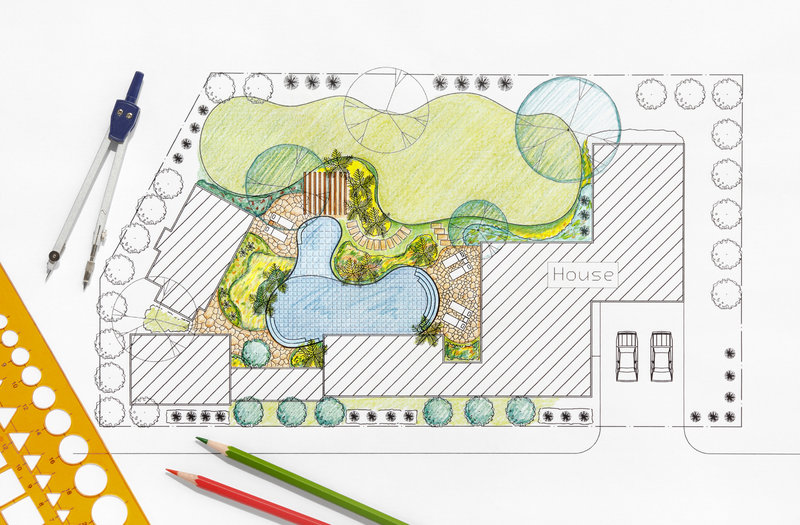CA Contractors #344056

Does your property need a facelift? Whether it's your home or your company's corporate office, its got to have attractive landscaping. Otherwise, you'll start to get the wrong kind of reputation.
While proper landscaping sounds good in theory, it's a financially smart decision, too. Great landscaping actually adds value to your property.
Before you start making changes, though, there are some things you need to keep in mind. Keep reading to learn about nine factors you should consider when making landscape design plans.
Whether you're looking to redesign a yard or a lunch area for employees, you've got to consider the purpose of the area. You'll need a very different design for a pool area versus a corporate thoroughfare.
So before you make any design plans, think about what the space will be used for. Here are some questions to ask yourself:
There are plenty of questions to ask. It all boils down to what you intend to do with the space, so make sure you get that defined.
Your landscape design should be driven in part by who will use the area in questions. Children and pets need something different than adults who just plan to meander and talk.
If you're designing for children, you'll have to make sure you don't include any poisonous plants. And you'll want to stay away from any decorations that could be dangerous to young children.
If the space is just for people walking between buildings, you don't have to be as particular.
The climate of the area where you live must be taken into account when you design your new landscape. Otherwise, you may end up wasting a lot of money.
The climate will determine which types of plants can thrive and which ones cannot. Don't make the mistake of choosing plants that are just going to die or look sick because they shouldn't have been added in the first place.
Some plants require more attention than others. If you don't intend to spend a lot of time gardening, choose plants that take care of themselves.
While all plants need a little something, some do just fine with nothing more than some help from Mother Nature. Others need much more attention.
If you won't have the time to maintain the plants you want and they do require it, you need to choose something else.
If there are any with special needs who'll be accessing the area, make sure you plan ahead to accommodate them. If workers or family members utilize wheelchairs or have other walking needs, use smooth paths instead of cobblestones.
In many instances, you can still get the design you want while keeping it accessible.
Before creating your landscape design plans, think about how sunlight hits your hard or business park. What areas are in the shade a lot? Which ones get a lot of shade?
Different plants have different needs, so you'll need to keep exposure to sunlight in mind. All plants need some amount of light, which some need much more than others.
Use plants that thrive in the shade in areas that don't get much direct sunlight. Do the opposite for areas that receive lots of sunlight.
The soil you have at home may not be the same as what you've had elsewhere. Make sure you know its makeup before choosing plants.
Your soil may be rocky, sandy, or full of clay. Whichever it is, let that guide your choice in plants.
You'll also need the right balance of nutrients for your plants to do well. If you suspect anything may be off, get your soil tested.
While you don't have to have a theme, choosing one can make your landscape look even better. For example, choosing all Japanese plants will help the overall area look better since those plants naturally grow in the same area.
Consider any themes you may want to apply to your landscape. If you don't have any, at least choose plants that complement each other.
Whether they're coming from your living room or the cafeteria at your local office, people will come from somewhere when they enter your landscaped area. Do the two areas flow well together?
These transitions are important for the overall flow of your landscaping. It doesn't make sense to have a landscaped area that completely contrasts with your indoor space.
Keep colors, styles, composition, and the overall feel of each area in mind, then make sure they all work together.
When you take the time to create new landscape design plans, you want it to work out. So don't waste your time doing it wrong the first time. All it takes is a little know-how and some good decision making.
When creating your landscape design plans, keep these nine factors in mind. You can still get a good design if you forget them, but you'll save yourself the hassle of needing new designs in the future if you do keep them in mind.
Concerned about choosing plants that can survive dry weather? Check out this article on drought-tolerant landscaping.